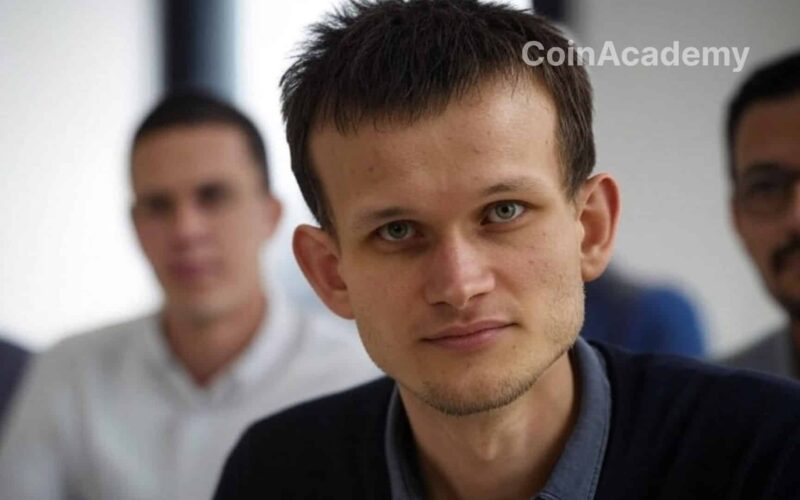Pectra and Scalability
The Pectra update will double the number of blobs per block, reducing costs for Layer 2 and improving Ethereum’s scalability. A $2 million bug bounty program is currently underway before its deployment.
Layer 1 Revenues and Native Rollups
Ethereum is seeking to capture more revenues from Layer 2 by promoting native rollups. Arbitrum, Base, Optimism, and Scroll are already considering this transition to enhance their integration with the network.
Economic Vision and Future of Ethereum
Vitalik Buterin advocates for a balanced approach between stability and innovation, with an economic model focused on data availability and a long-term projection of 10 million TPS.
A Tense Ethereum AMA Session
The Ethereum Foundation’s key researchers, including Vitalik Buterin, Justin Drake, and Dankrad Feist, answered questions from the community during their semi-annual AMA session on Reddit. This discussion comes at a crucial time for the Ethereum ecosystem, with Aya Miyaguchi stepping in as President of the Ethereum Foundation after months of internal criticism.
Among the major topics discussed, the future of Ethereum’s scalability, the Layer 1 economic model, and upcoming innovations, such as the Pectra update, garnered attention.
Pectra: A Major Upcoming Update
The next technological evolution of Ethereum, Pectra, is expected to be as significant as the Dencun hard fork or the transition to Proof of Stake. Justin Drake stated that the first phase of this update could be deployed “in the coming months.”
In preparation, a $2 million bug bounty program has been launched to test the robustness of this update before the March 24 deadline. Notably, Pectra will double the number of “blobs” per block from three to six. These blobs, introduced during Dencun, temporarily store transactional data to reduce costs for Layer 2. Drake affirmed that this increase will disrupt the blob fee market, making transactions more affordable.
The Challenge of Capturing Revenues for Ethereum
One current point of friction involves the relationship between Ethereum and its Layer 2 solutions. Over the years, these scalability solutions have captured an increasing share of transaction-related revenues, thereby reducing native Layer 1 revenues. Vitalik Buterin and his team reiterated their commitment to strengthening the economic position of the main network by promoting the adoption of “native rollups.”
The challenge lies in finding a balance between protocol neutrality and the influence of the Ethereum Foundation. “The goal is Ethereum’s neutrality, not the Ethereum Foundation’s,” emphasized Buterin, highlighting that major risks come from Layer 2, wallets, and staking services.
Data, Fees, and Ethereum’s Economic Future
The increase in blobs by Pectra has sparked a debate about the need to raise base fees on these transactions. Some community members believe that these fees should be increased to maximize network revenues, an approach the EF researchers consider too short-term focused.
Justin Drake added that the demand for data availability (DA) will explode in the long term, surpassing current supply by far. He presented an optimistic projection: in ten years, Ethereum could process 10 million transactions per second (TPS), generating $1 billion in daily revenues even with fees as low as $10.00 per transaction.
Towards the Era of Native Rollups
The concept of “native rollups” has emerged as a potential solution to the current fragmentation of Layer 2. Unlike current rollups like Optimism and Arbitrum, which remain separate entities subject to Layer 1 constraints, native rollups would directly integrate with Ethereum.
Drake revealed that several major rollups, including Arbitrum, Base, Optimism, and Scroll, have already expressed interest in this transition to native. According to him, the proposal is attractive because it represents a free upgrade for rollups.
However, the multi-team approach to rollups has enabled accelerated innovation, particularly in zero-knowledge proofs (ZKP) and interoperability. “We could never have made progress this fast without this diversity of actors,” acknowledged Ansgar Dietrichs.
A Brighter Future for Ethereum
Vitalik Buterin expressed a more stabilized vision for Ethereum’s future. “We need to separate what can be frozen from what needs to continue evolving,” he stated, highlighting that research is now progressing at a slower pace than five years ago.
As challenges related to interoperability and Layer 1 revenues persist, native rollups and the rise in data availability could become the pillars of Ethereum’s economic future.




